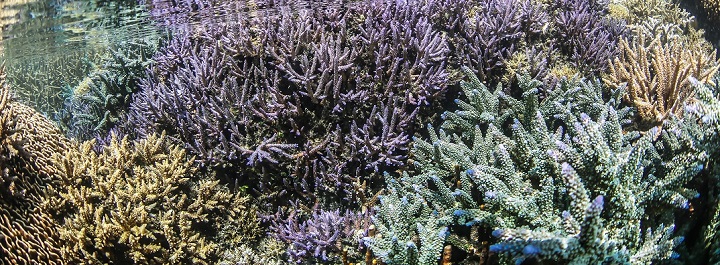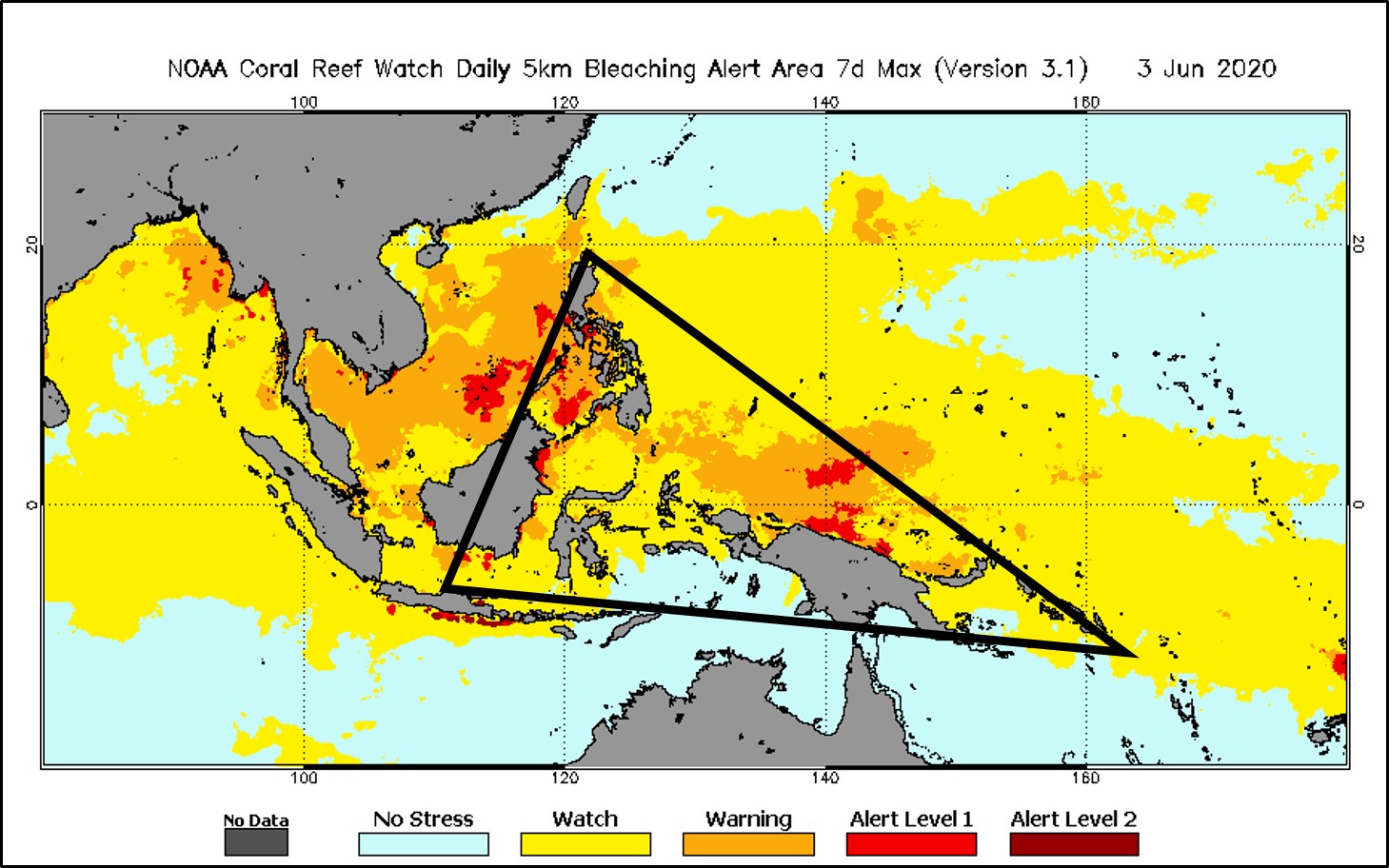- ABOUT US
- PROGRAM AREAS
- CONSERVATION APPROACH
- EDUCATION
- MULTIMEDIA
- Coral Reef Conservation Cooperative Agreements and Grants support local coral reef management capacity building, marine protected area networks, and coral reef monitoring in priority international locations, including the Coral Triangle. In 2019, the program awarded a two-year grant to Conservation International to implement community-managed marine areas and community-managed marine area networks in Papua New Guinea and the Solomon Islands.
- The Coral Reef Conservation Fund is administered by the National Fish and Wildlife Federation and allows the Coral Reef Conservation Program to award grants for international coral reef conservation activities, including grants for projects in Indonesia and the Philippines from 2018 to 2019.
- Coral Reef Watch uses remote sensing, modeled, and field data to observe, predict, and report on coral reef environments worldwide, including the Coral Triangle. Coral Reef Watch provides the only global early-warning system of environmental changes that can lead to coral bleaching.
- The Atlantic Oceanographic and Meteorological Laboratory collaborated with University of Auckland, the Indonesian Ministry of Environment and Forestry, Conservation International, and the University of Miami on a study to select spatial priorities for conserving biodiversity in the Coral Triangle.
- Since 2009, the Coral Reef Conservation Program has served as NOAA’s point of contact for an agreement with the U.S. Agency for International Development to provide scientific services, technical assistance, and capacity-building support to a wide range of national and regional marine and coastal conservation initiatives in Indonesia, Timor-Leste, the Philippines, and the Micronesia region.
Cheers to the Coral Triangle
The Coral Triangle is an area in the western Pacific that includes the waters of Indonesia, Malaysia, Papua New Guinea, the Philippines, the Solomon Islands, and Timor-Leste. The Coral Triangle is home to 75 percent (almost 600) of the world’s coral species, over 2,000 species of reef fish, and six out of seven sea turtle species. The region supports multiple marine mammal species, an important tuna nursery and migration area, and over 120 million people.

The NOAA Coral Reef Conservation Program understands that successful coral reef conservation cannot be accomplished with domestic activities alone. Coral reef ecosystems around the globe are connected, and face many similar threats. The Coral Reef Conservation Program’s International group serves as the U.S. government’s technical and scientific body for strengthening governance and management capacity worldwide. In particular, NOAA focuses on efforts in the wider Caribbean, Micronesia, the South Pacific, and the Coral Triangle regions.
Coral Reef Conservation Program activities in the Coral Triangle include

The Coral Triangle is one of the most diverse natural areas in the world, and NOAA is working diligently to protect and conserve the region for current and future generations.
Related Stories and Products
About Us

The NOAA Coral Reef Conservation Program was established in 2000 by the Coral Reef Conservation Act. Headquartered in Silver Spring, Maryland, the program is part of NOAA's Office for Coastal Management.

The Coral Reef Information System (CoRIS) is the program's information portal that provides access to NOAA coral reef data and products.
Work With US
U.S. Coral Reef Task Force
Funding Opportunities
Employment
Fellowship Program
Contracting Assistance
Graphic Identifier
Featured Stories Archive

Access the archive of featured stories here...
Feedback
Thank you for visiting NOAA’s Coral Reef Conservation Program online. Please take our website satisfaction survey. We welcome your ideas, comments, and feedback. Questions? Email coralreef@noaa.gov.
Stay Connected
Contact Us
NOAA’s Coral Reef Conservation Program
SSMC4, 10th Floor
1305 East West Highway
Silver Spring, MD 20910
coralreef@noaa.gov
